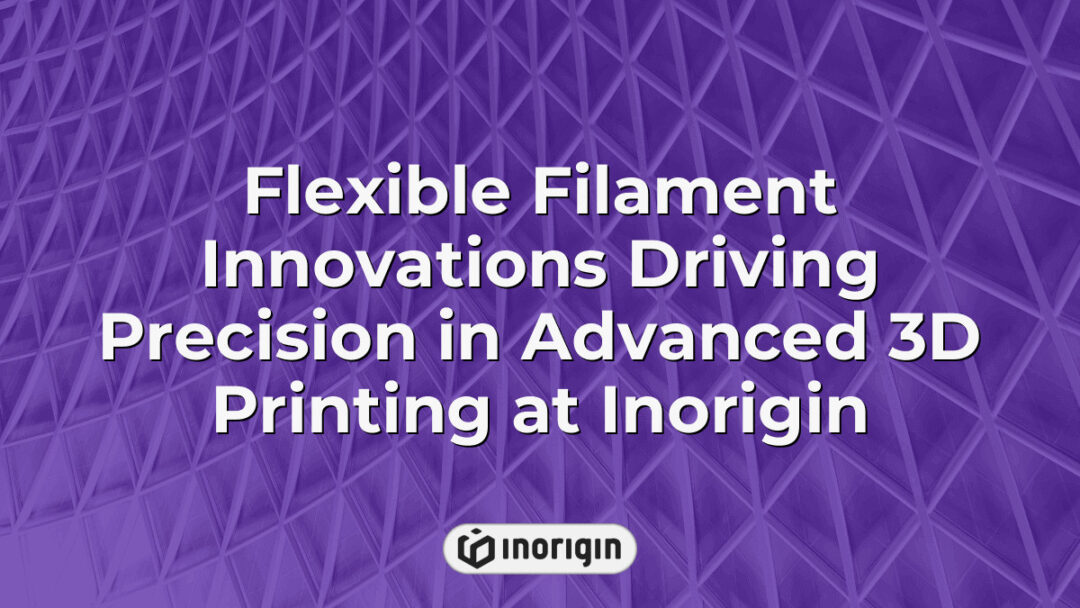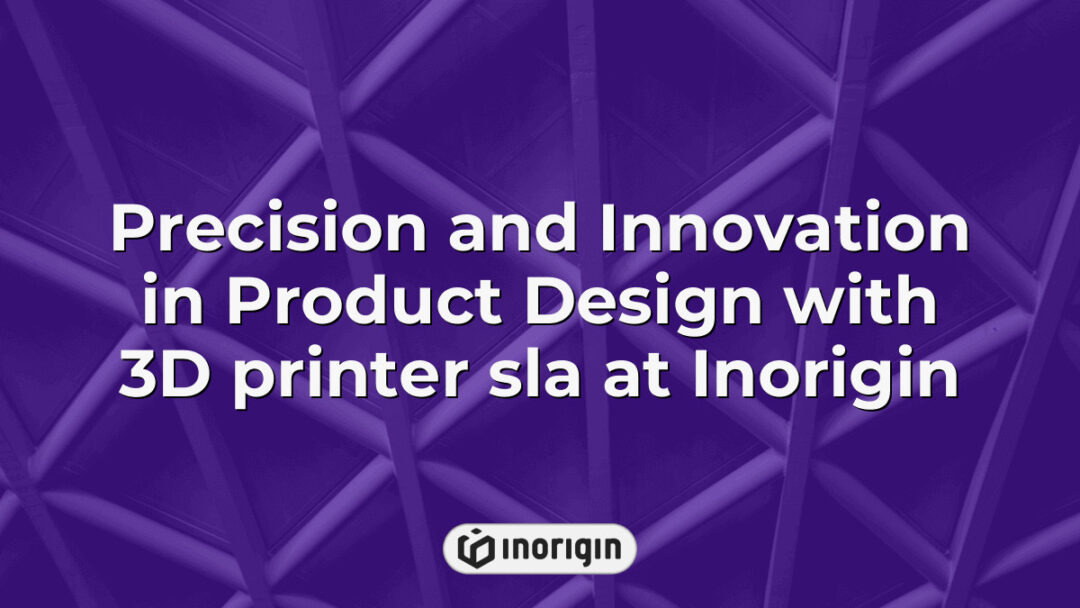The advent of flexible filament in the realm of 3D printing has revolutionized manufacturing and design processes across various industries. Characterized by its remarkable elasticity and durability, this innovative material enables the production of intricate designs that were previously unattainable with traditional rigid filaments. Flexible filament encompasses a range of thermoplastic elastomers (TPE) and thermoplastic polyurethane (TPU), each offering unique properties suitable for diverse applications—from creating custom prosthetics to producing protective casings for electronic devices. As advancements in technology continue to refine these materials, their potential to enhance functionality while reducing waste positions them at the forefront of sustainable manufacturing solutions, warranting further exploration into their capabilities and implications for future innovations.
| Αποψη | Key Takeaway |
|---|---|
| Ορισμός | Flexible filament is a 3D printing material known for its elasticity and durability, enabling the creation of complex and resilient designs. |
| Τύποι | Common types include thermoplastic elastomers (TPE) for rubber-like flexibility and thermoplastic polyurethane (TPU) for enhanced strength and wear resistance. |
| Εφαρμογές | Flexible filaments are ideal for producing custom prosthetics, protective casings, automotive parts, and wearable devices due to their adaptability. |
| Φόντα | They offer improved durability, comfort in wearable products, and greater design versatility, supporting both functional and aesthetic requirements. |
| Συμβουλές εκτύπωσης | Optimizing printer settings such as nozzle temperature and print speed, along with proper material storage and post-processing, ensures high-quality prints. |
| Περιβαλλοντικές Θεωρήσεις | While offering sustainability potential, flexible filaments require mindful handling due to challenges in recycling and energy consumption. |
| Cost Insights | Although flexible filaments typically incur higher initial costs, their durability and reduced need for post-processing can lead to long-term savings. |
What Is Flexible Filament?
Flexible filament refers to a category of materials used primarily in 3D printing, characterized by their ability to bend and stretch without losing structural integrity. These filaments are predominantly composed of thermoplastic elastomers (TPE), which endow them with unique elastic properties that differentiate them from traditional rigid plastics. The inherent flexibility of these materials allows for the production of parts that require both durability and resilience, making them suitable for applications ranging from prototyping to functional components in consumer products. As a result, flexible filaments have gained popularity among designers and engineers who seek to create items such as phone cases, toys, and wearable devices that demand an adaptable nature. Overall, the combination of thermoplastic elastomer composition and advantageous elastic properties positions flexible filament as a significant innovation within additive manufacturing technologies.
Types Of Flexible Filaments
The realm of flexible filaments can be likened to a vast landscape, where each type possesses unique properties and applications reminiscent of the varied terrains found within nature. Among the most prominent categories are thermoplastic elastomers (TPE) and thermoplastic polyurethanes (TPU), both of which exhibit distinct characteristics suited for different uses in 3D printing and industrial applications. TPE is recognized for its rubber-like flexibility combined with ease of processing, making it an ideal choice for producing soft components that require durability without sacrificing elasticity. Conversely, TPU presents enhanced mechanical strength and resistance to wear, rendering it suitable for more demanding applications such as automotive parts or protective gear. Consequently, understanding these types of flexible filaments not only facilitates informed material selection but also highlights their pivotal roles across various sectors, ultimately fostering innovation in design and functionality.
Applications Of Flexible Filament
The versatility of flexible filaments, particularly those composed of thermoplastic elastomers (TPEs), can be likened to a rubber band that stretches without breaking, adapting to various shapes and applications. This remarkable elasticity has led to their widespread adoption in numerous industries, notably in the production of automotive parts. For instance, TPE-based components such as seals and gaskets are increasingly utilized for their ability to withstand fluctuating temperatures and mechanical stress while maintaining structural integrity. Furthermore, the incorporation of flexible filament technology extends beyond automotive uses; it is also prominent in consumer goods, medical devices, and prototyping applications where customization and durability are paramount. As advancements continue to enhance the properties of these materials, the potential for innovative applications grows significantly, highlighting the importance of flexibility not only in material science but also in meeting diverse industrial needs.
Advantages Of Using Flexible Filament
The advantages of using flexible filament in additive manufacturing are manifold, particularly due to its unique rubbery properties that facilitate a range of applications. One notable characteristic is the ability of flexible filament to stretch and bend without compromising structural integrity, allowing for the creation of intricate designs that would otherwise be unachievable with standard materials. This flexibility not only enhances creativity but also results in functional components that can endure dynamic environments. Specifically, three primary benefits emerge when utilizing flexible filament:
- Enhanced durability under stress conditions, which enables parts to absorb impacts effectively.
- Improved comfort in wearable items, as the soft nature conforms better to body shapes compared to rigid alternatives.
- Greater versatility in design options, providing the capability to produce complex geometries tailored for specific functionalities.
These attributes collectively underscore the significance of flexible filament within various industries, from medical devices requiring biocompatibility and adaptability to consumer products where comfort and usability are paramount. Such characteristics position flexible filaments as pivotal materials capable of addressing both aesthetic aspirations and practical demands in modern engineering endeavors.
Tips For Printing With Flexible Filament
When engaging in the practice of 3D printing with flexible filament, several essential tips can enhance both the process and final output. To begin with, it is crucial to understand how various settings impact the strength and flexibility of the printed object. For instance, adjusting print speed and temperature can significantly influence material behavior during extrusion. Additionally, proper bed adhesion techniques are paramount for achieving successful layer bonding, which directly correlates with the overall durability of the model produced. The following considerations provide a structured approach to effectively utilizing flexible filament:
- Printer Settings
- Optimal nozzle temperature: Ensuring that the temperature aligns with manufacturer specifications promotes better flow properties.
- Print speed adjustments: Slower speeds may improve layer adhesion while maintaining overall strength.
Material Handling
- Proper storage conditions: Keeping filament dry prevents moisture absorption that could compromise print quality.
- Pre-drying options: Utilizing a filament dryer before use enhances performance by eliminating absorbed humidity.
Post-processing Techniques
- Layer bonding methods: Applying heat post-printing can strengthen weak points within layers.
- Surface treatments: Smoothing or reinforcing surfaces through coatings increases resilience against wear.
By adhering to these guidelines, individuals can optimize their experience with flexible filaments, ensuring that prints exhibit not only enhanced aesthetic qualities but also superior structural integrity. Ultimately, understanding the nuances of flexible filament processing allows for more reliable outcomes in diverse applications where strength and flexibility are critical parameters.
Συχνές Ερωτήσεις
How Do I Store Flexible Filament To Prevent It From Degrading?
The storage of flexible filament is a critical aspect for maintaining its integrity and performance, with theories suggesting that environmental factors significantly influence the degradation process. Many practitioners assert that exposure to moisture and UV light can compromise the material properties of flexible filaments, leading to brittleness or reduced flexibility over time. Therefore, it is essential to consider optimal storage conditions to mitigate these risks. First, employing airtight containers equipped with desiccants serves as an effective method to control humidity levels, which directly affects the filament’s absorption characteristics. Additionally, storing filaments in dark environments away from direct sunlight will minimize potential photodegradation caused by ultraviolet radiation. Moreover, maintaining stable temperatures during storage further prevents thermal degradation; fluctuations in temperature can induce stress within the polymer structure of the filament. Collectively, adhering to these guidelines ensures that flexible filaments retain their desired mechanical properties and longevity for future applications in 3D printing technologies.
Can I Mix Different Types Of Flexible Filaments In One Print?
The intricate dance of various flexible filaments during a 3D printing process can evoke the image of an artist blending colors on a palette, each hue contributing to the overall masterpiece. The feasibility of mixing different types of flexible filaments in a single print hinges upon several critical factors, including material compatibility, extrusion temperature requirements, and mechanical properties. For instance, combining thermoplastic elastomer (TPE) with thermoplastic polyurethane (TPU) may yield unique results if both materials share similar melting points and adhesion characteristics; however, significant discrepancies in these parameters could lead to poor layer bonding and compromised structural integrity. Moreover, understanding how differing shore hardness ratings affect flexibility and strength is essential when attempting such combinations. As manufacturers continue to innovate and develop new formulations for flexible filaments, ongoing experimentation will be necessary to establish best practices for successful multi-material prints without compromising performance or quality.
What Are The Environmental Impacts Of Using Flexible Filaments?
The environmental impacts of using flexible filaments in 3D printing are multifaceted, warranting a comprehensive examination. For instance, consider the case study of a small startup that specializes in producing customizable medical devices using thermoplastic elastomers (TPEs), a type of flexible filament. While this innovation provides significant benefits for patient care through personalized solutions, it also raises questions regarding materials disposal and recycling. The production of TPEs often involves petrochemical derivatives, contributing to fossil fuel depletion and associated greenhouse gas emissions during manufacturing processes. Furthermore, the end-of-life scenario for these products can be problematic; many flexible filaments are not biodegradable and may persist in landfills for extended periods, thereby exacerbating plastic pollution.
Moreover, the energy consumption involved in both the production and usage phases must be considered. The extensive heating required by 3D printers to process flexible materials can lead to increased electricity demand, which is frequently sourced from non-renewable energy supplies. Transitioning towards eco-friendly alternatives such as bio-based or recyclable filaments could mitigate some of these adverse effects but presents challenges related to cost and performance consistency.
TIP: To visually represent the environmental impacts of flexible filaments versus conventional ones, create a comparative infographic highlighting key factors such as carbon footprint during production, recyclability options available post-use, and energy requirements per kilogram of filament produced. This visual aid will facilitate better understanding among stakeholders about choosing sustainable materials in additive manufacturing practices.
How Do Flexible Filaments Compare To Traditional Rigid Filaments In Terms Of Cost?
The comparison of flexible filaments to traditional rigid filaments in terms of cost reveals a multifaceted landscape that merits careful consideration. Initially, it is important to recognize that the price of flexible filaments often appears daunting when juxtaposed with their rigid counterparts; this perception may lead one to conclude that they are prohibitively expensive for widespread use. However, a deeper analysis uncovers various factors influencing these costs, such as material composition, production processes, and intended applications. For instance, while flexible filaments may command higher prices per kilogram due to the complexities involved in manufacturing them—often requiring specialized equipment—their unique properties can yield significant savings over time through reduced post-processing and enhanced durability. Furthermore, as demand for 3D printing continues to escalate across diverse industries, economies of scale could drive down prices for flexible materials in the future. Thus, although initial investment might be greater for users opting for flexible filaments, potential long-term benefits must also be weighed against upfront expenses to provide a comprehensive understanding of their economic implications within additive manufacturing contexts.
Are There Any Specific Safety Precautions I Should Take When Working With Flexible Filaments?
Working with flexible filaments can be likened to navigating a complex landscape, where the terrain may shift unexpectedly and require careful consideration of safety measures. As these materials are often more susceptible to issues such as clogging and overheating compared to traditional rigid filaments, it becomes essential to adopt specific precautions during handling and printing processes. For instance, maintaining optimal temperature settings is critical; excessive heat can lead not only to filament degradation but also poses risks of burns or fire hazards. Additionally, ensuring proper ventilation in the workspace is paramount, particularly since certain flexible filaments may emit volatile organic compounds (VOCs) when heated. It is advisable to utilize enclosures that allow for adequate airflow while minimizing exposure to fumes.
To further enhance safety while working with flexible filaments, it is beneficial to invest in quality equipment designed specifically for these materials. Employing printers equipped with direct drive extruders can significantly reduce the likelihood of jams and other mechanical failures associated with Bowden-style systems. Furthermore, utilizing personal protective equipment (PPE), such as gloves and masks, when dealing with filament spools or cleaning residues will mitigate potential health risks stemming from chemical exposure or sharp filament ends.
Σύναψη
Flexible filaments revolutionize 3D printing, enabling the creation of intricate designs and functional parts. With approximately 30% of all 3D printed products incorporating flexible materials, this statistic underscores their significance in modern manufacturing. The ability to produce soft, durable objects enhances innovation across various industries, fostering creativity and practicality simultaneously.
Σχετικές αναρτήσεις:
- Flexible 3D printer filament performance and application advantages at Inorigin
- Flexible PLA Filaments Transforming Precision 3D Printing at Inorigin
- Σχεδιασμένα ευέλικτα προϊόντα φέρνουν επανάσταση στον σχεδιασμό ακριβείας και την προηγμένη κατασκευή πρωτοτύπων στην Inorigin
- TPU 3D Printer Filament Απόδοση και συμβατότητα στον προηγμένο σχεδιασμό προϊόντων
- Τεχνικές ακριβείας και επιστήμη υλικών πίσω από το καουτσούκ 3D εκτύπωσης για προηγμένο σχεδιασμό προϊόντων
- Precision and Flexibility in TPU 3D Printing for Advanced Product Engineering




